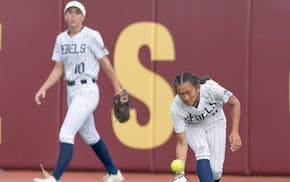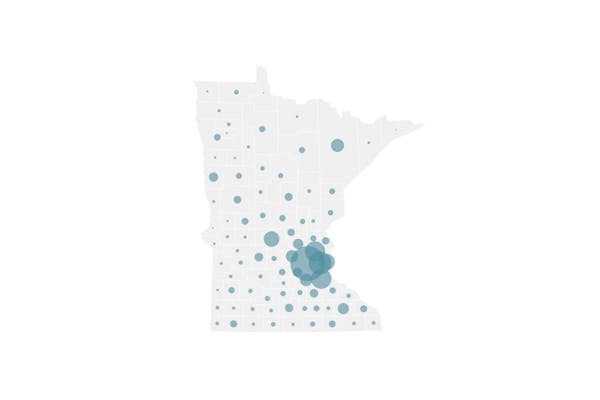Minnesota's controversial pause on youth sports last fall received new attention Monday as lawmakers and sports advocates accused Gov. Tim Walz and state health leaders of overselling the danger of athletes spreading COVID-19 to vulnerable people such as long-term care residents.
The Let Them Play MN group that opposed many sports-related pandemic restrictions obtained thousands of pages of internal state e-mails from last fall and raised concern about one in which a spokesperson advised promoting the pause by connecting youth sports infections to severe COVID-19 cases in long-term care.
"As [people] push back on youth sports and whether they really need to be ended ... we need to more explicitly tie youth sports to LTC. People are going to youth sports, sitting in bleachers, eating popcorn and talking with people around them, cheering, then maybe stopping at a restaurant or bar on the way home, then going to jobs in LTC the following day," said the e-mail by Kate Brickman, a contractor hired to help with state COVID-19 communications to other spokespeople.
This proposal to promote last fall's sports pause became a central point of a state Senate Education Committee hearing Monday, when state Sen. Michelle Benson, R-Ham Lake, said she was "embarrassed" that the Minnesota Department of Health considered such a backward strategy.
"Here's the way it should work: There is data, then there is a decision, then there is communication," she said. "It's not, 'We need a message. Go find me the data that matches it.' "
The focus on a five-month-old decision comes at an odd time, when pandemic activity is showing signs of weakening and Minnesota leaders rescinded a mask-wearing requirement for outdoor athletics. The pause itself was phased out after one month — first with the allowance of practices in early January followed by the return to competitive games with mask-wearing and social distancing. Mask-wearing is still required for indoor games.
A third COVID-19 wave emerged over the past month among children and young adults, largely because many older adults — including 86% of senior citizens as of Monday — had received vaccine against the infectious disease.
The wave has shown signs of peaking — with the state on Monday reporting a drop to 7% in the positivity rate of COVID-19 testing and a decline from 699 hospitalizations on April 13 to 613 on Sunday. However, the state reported its third pediatric COVID-19 death on Monday — in a Marshall, Minn., first-grader — and at least 7,079 deaths overall.
State Health Commissioner Jan Malcolm did not address the e-mail during her testimony to the Senate committee but said she was confident in the decision made at the time to confront a rising pandemic wave that was quickly consuming hospital beds.
"There's always a problem with prevention," Malcolm said. "You can never prove that because something didn't happen, it was because of the prevention actions that were taken."
Walz didn't mention any link between youth sports and COVID-19 in long-term care when he introduced the pause on sports on Nov. 18, along with the temporary closure of fitness clubs, a return to takeout service only by restaurants, and restrictions on social gatherings.
Advocates said the timing of their criticism was delayed until now because the e-mails they sought through an open-records request just arrived. They said it remains important to press their concerns because they don't believe there is proof that masks protect athletes in competitions or that sports present any more risk of COVID-19 transmission than everyday activities.
"Our government should not restrict our kids' freedom," said Dawn Gillman, a Dassel, Minn., mother of two high school football players who founded Let Them Play MN. "It's causing harm to their well-being without factual basis."
The state on Monday reported 637 sports-related outbreaks in the pandemic, defined as two members of a team with infections within 14 days of one another and no other possible sources of viral transmission in common.
Genomic sequencing and contact tracing of an outbreak centered on Carver County this year showed how infections were connected across schools, sports teams, fitness clubs and workplaces. Whether infections occurred during athletic competitions isn't always clear, though, and health officials acknowledged that viral transmissions might have occurred in social gatherings after games and practices.
"We have had a couple deeper investigations that we believe were pretty conclusive in terms of the spread happening during play or during practice," Malcolm said.
Advocates said they don't believe that was enough proof to justify the extreme step of pausing and restricting sports, given published survey results in Wisconsin showing no higher infection rates among student athletes compared with others their age last spring.
The Wisconsin survey results also showed an increase from 10% of student athletes reporting depression symptoms to 33% after sports activities had been shut down.
During the committee hearing, Bob Kaufman told of the heartbreak for his son and other members of the Hill-Murray School hockey team when they learned last month that they would need to quarantine and miss the state tournament because of an infection on an opposing team they had played in sectionals. A video review of the game showed that no Hill-Murray players were on the ice with the infected player for more than 1 minute, 18 seconds.
"To have it ripped from them is quite honestly unacceptable," he said.
Mankato West senior Carson Deichman told the committee that quarantine rules arbitrarily prevented him from competing in the state swim meet. He also viewed sports as protective.
"With schools closed and without sports, kids my age had nothing to do other than hang out with friends," he said.
Health officials knew the sports pause last fall would be unpopular, based on e-mails at the time. Laura Oliven of the state's COVID-19 response team wrote on Nov. 5 that "the election, particularly the loss of six DFL seats in the House, was in part a referendum on our guidance, and sports was part of that."
On the other hand, reports coming from school nurses and county health officials across Minnesota were expressing urgency and questioned how sports could continue in places where in-person learning had been paused.
Some reported pacts among varsity teams to not seek testing, no matter what, to avoid quarantines during the season.
An infection was reported Nov. 13 in a volleyball player who worked in a nursing home.
"We really need sports to stop," bemoaned one metro area school nurse in an e-mail on Nov. 4. "Please!"
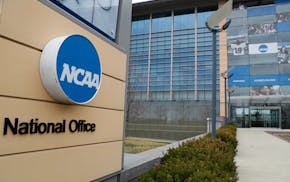
Federal judge approves $2.8B settlement, paving way for US colleges to pay athletes millions
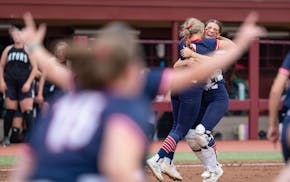
United South Central wins Class 1A softball title with overpowering pitching
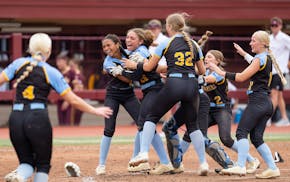
St. Cloud Cathedral endures a tense start, defeats Hawley for Class 2A softball state title
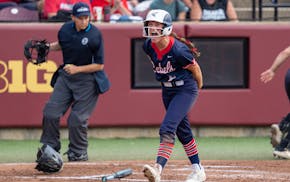
Softball state tournament: Champlin Park (4A), Rocori (3A), St. Cloud Cathedral (2A), United South Central (1A) are champs
